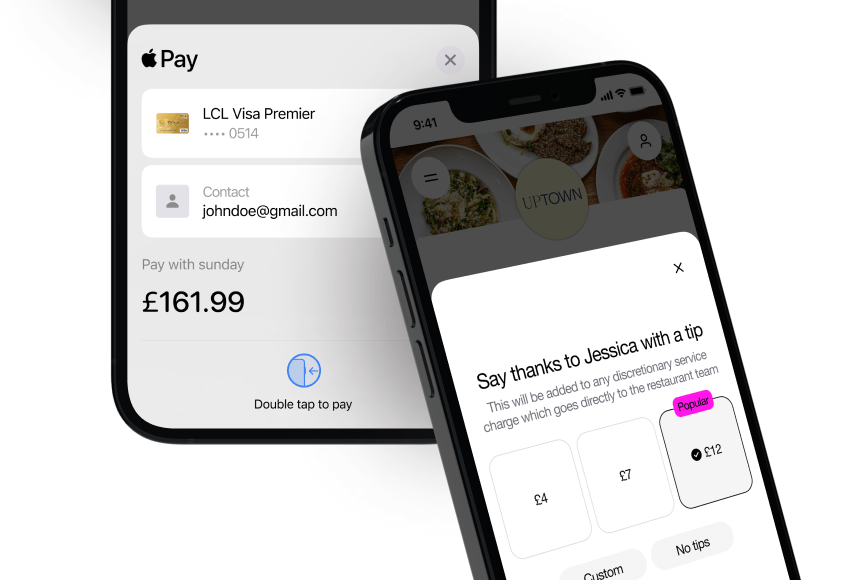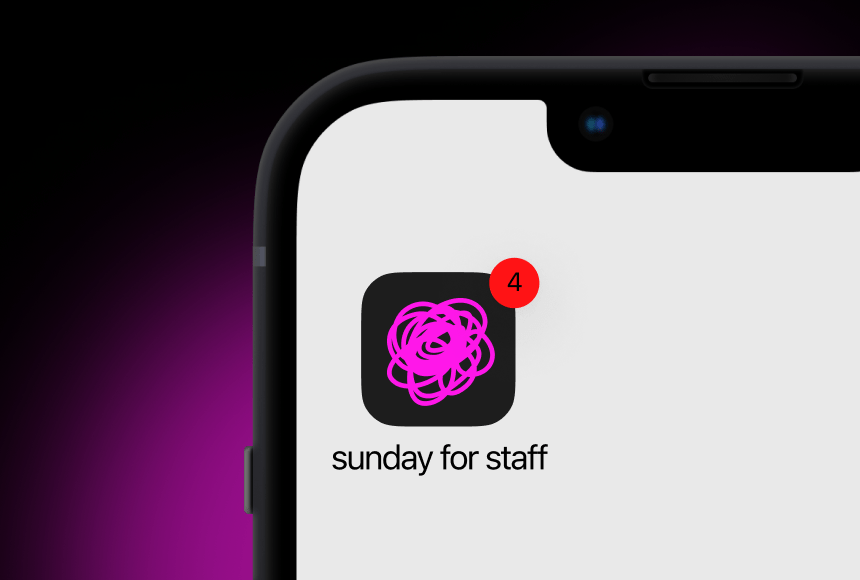
Simplifying Gratuities for Modern Hospitality
Why Digital Tipping Is Gaining Ground
Tipping has always been a cornerstone of restaurant culture, a way for diners to reward great service and for staff to augment their income. But with more people carrying little or no cash, traditional tip jars and coin trays are losing their appeal. Instead, a growing number of UK restaurants are shifting to digital solutions that let guests add gratuities via their smartphones or contactless cards.
A 2022 report from Hospitality Net (source) shows that digital payment methods—including tips—have seen a 25% uptick among British consumers over the last two years. This trend reflects broader shifts in how people want to settle their bills—quickly, securely, and with minimal hassle. Below, we’ll delve into why digitising tips can be a game-changer for your restaurant and highlight the concrete benefits for managers, staff, and customers alike.
Streamlined Operations and Reduced Admin Tasks
If you’ve ever juggled piles of coins and envelopes at the end of a long shift, you know how time-consuming tip reconciliation can be. Counting out the right amounts, ensuring accuracy, and distributing gratuities among staff can turn into a nightly headache. Digitising tips spares you—and your team—from this clumsy ritual.
- Automated Calculations: When diners add a digital tip, everything is recorded in real time. At close of day, managers can simply view the totals in a dashboard rather than sifting through paper receipts and random notes.
- Faster Shift Changes: If an employee leaves mid-shift or staff overlap occurs, the system can track pro-rated shares automatically. You won’t waste half an hour recalculating who earned what.
- Easy End-of-Week Payouts: Some platforms let you allocate tips to each team member’s account or a collective pot. Payments can be rolled into wages or paid out separately—either way, fewer manual steps for management.
In essence, removing cash from the equation eliminates a tangle of micro-tasks. Less fumbling with coins or dividing up random notes means staff go home on time, and you’re free to focus on broader responsibilities.
Greater Transparency and Staff Satisfaction
Money matters are always sensitive. Traditional tipping can spark staff disputes: Was the pot split fairly? Did the afternoon team leave enough for the night crew? Digitisation addresses these concerns by bringing clarity to every transaction.
- Real-Time Records:Each digital tip is logged with details like table number or server ID. Employees can see exactly how much is coming in, minimising suspicion about missing funds or uneven splits.
- Clear Distribution Policies:You can set up specific allocations—like a certain percentage for kitchen staff, or a shared gratuity pool. Everyone understands the system from the outset, which reduces guesswork and potential friction.
- Objective Tracking:No more tipping “by feeling” or manager discretion. The system handles calculations impartially, leaving less room for staff to assume bias or error.
When your team knows they’re being treated fairly, morale rises—and so does loyalty. Employees can focus on delivering exceptional service rather than worrying whether they’ll receive their rightful share of the night’s tips.
Meeting Guests’ Payment Preferences
Increasingly, diners want to do everything on their smartphones, from booking a table to splitting the bill with friends. According to Statista (source), over half of UK consumers regularly use contactless or mobile payments. Offering a digital tip option aligns with those habits—and can even encourage more frequent tipping.
- Convenience Boost: Instead of rummaging for spare coins, customers simply tap a tip amount on their phone. This frictionless method can nudge them to tip more generously—particularly if it’s just one or two taps away.
- Customisable Prompts: Some systems allow you to display suggested tip percentages (e.g., 10%, 12.5%, 15%). Studies show these prompts can lead to higher gratuities than a blank line on a paper receipt.
- Positive Guest Experience: When diners find the entire process—paying and tipping—quick and intuitive, it leaves them on a high note. That final positive impression often translates into better online reviews and repeat visits.
Embracing digital tipping not only satisfies modern consumer expectations; it also positions your restaurant as forward-thinking and attuned to convenience.
Better Data for Smarter Management
When tip transactions go digital, they leave behind a detailed data trail that you can analyse for operational insights. It’s a far cry from sifting through random bits of paper or rummaging for typed-up receipts. Data analytics can shed light on your staff’s performance and even reveal hidden revenue opportunities.
- Peak Tipping Times:Identify when diners are most generous—like Friday evenings or Sunday brunch. Then you can allocate more staff or launch targeted specials to maximise turnover and earnings.
- Server Comparison:See if certain servers consistently earn higher gratuities. Are they especially good at upselling desserts or building rapport? You might use those findings to train other team members or adjust shift schedules.
- Menu Impact:Track whether some menu items correlate with bigger tips. If a new cocktail special seems to boost overall spending and gratuity, consider featuring it more prominently.
The more data you gather, the better you can fine-tune your approach—be it adjusting staff rosters, refreshing the menu, or planning marketing pushes. This proactive stance helps you keep a competitive edge in a busy market.
Faster Table Turnover and Improved Workflow
Every minute counts in a restaurant, particularly during peak hours. Traditional tipping often slows things down, with servers returning multiple times to collect the bill, bring change, and handle separate transactions. Digitising tips—and the entire payment process—shrinks these lags.
- Immediate Payment Completion: Diners can pay and tip the moment they finish eating, without waiting for a server to appear with a card reader. This speeds up table turnover and makes space for the next customers.
- Less Back-and-Forth: Freed from constant trips to the till or scanning separate cards, servers can focus on the service that truly matters—greeting new diners, ensuring water glasses are topped up, and recommending daily specials.
Overall, digitising tips is a piece of the puzzle in streamlining front-of-house operations. Pair it with a well-organised floor plan and well-trained staff, and you’ll notice a tangible difference in how swiftly your restaurant can handle customer flow.
Enhanced Security and Compliance
Cash may be simple, but it comes with risks—like theft or miscounting. Digitising tips helps ensure every gratuity is tracked from start to finish. This accountability is particularly useful in preventing “disappearing bills” or staff disagreements over missing cash.
Additionally, digital logs can simplify compliance with tax rules. Instead of manually recording tip amounts for each shift, an automated system captures real-time data. That’s crucial for ensuring you follow HMRC guidelines, especially if tips are included in wages or declared as separate earnings. Clear records protect both employees and the business, minimising stress if you face an audit or staff queries over how tips are allocated.
Boosting Staff Motivation and Retention
With the hospitality sector facing labour challenges—Big Hospitality (source) reports ongoing staff shortages—keeping morale high has never been more crucial. Ensuring that employees receive fair, prompt, and transparent tips contributes significantly to job satisfaction. A staff member who knows they’ll be paid accurately and quickly is far more likely to stick around, saving you the headache of frequent turnover.
- Predictable Payouts: Digital systems can pay out tips weekly or even daily, boosting staff morale by providing quicker access to earnings.
- Reduced Drama: With transparent, automated splits, you cut out messy disputes or suspicions of favouritism. Everyone sees the same figures and follows the same rules.
Motivated employees are the backbone of a great dining experience—making digitising tips a hidden factor in retaining top talent and delivering consistent service.
Strengthening the Diner-Server Relationship
At first glance, removing the physical act of handing over cash might seem to reduce personal interaction. But in practice, many restaurants find the opposite: digitising tips frees servers from mechanical money-handling tasks, so they can invest more energy into genuine engagement. Instead of coming back with change or explaining new service charges, they can chat about the dish you loved or the story behind their signature cocktail.
Likewise, diners can add gratuities in seconds, sparing them any awkward rummaging or waiting for a server to return with a card machine. The goodbye moment flows naturally—less about the transaction and more about the experience. That positive exit often increases the odds of a glowing review or a return visit.
How Sunday Takes Digital Tipping to the Next Level
With sunday, restaurants can easily integrate QR code payments and digital tips into their existing operations. Diners scan, see their tab, and can seamlessly add a gratuity before completing the payment—no special app needed. This approach not only speeds up the process but also centralises all tips in a single dashboard for easy distribution. No guesswork, no separate spreadsheets, and no confusion about who earned what. It’s a streamlined way to treat your team fairly, impress your customers, and position your restaurant as forward-thinking.
Of course, switching to digital tips doesn’t mean dumping every traditional method overnight. Some patrons might still prefer cash, or you might run a hybrid approach. The point is to give those who want a quick, cashless way to tip the chance to do so—meeting guests where they’re already at technologically.
Preparing Your Restaurant for Digital Success
Ready to bring your tip process into the modern world? Start by educating your staff. Show them how digital tipping simplifies their end-of-shift routine and ensures nobody loses out due to arithmetic errors or misunderstood splits. Next, introduce clear signage or a brief explanation on your menu, letting customers know they can add a tip via their phone. If any guest has reservations, keep a fallback like a cash tip jar or a card machine for old-school comfort. Over time, many will migrate to the faster, simpler route.
Use your new system’s analytics to track how tips evolve. Does offering a nudge for a certain percentage boost gratuities? Are some servers excelling at generating bigger tips? If so, chat with them about sharing best practices. The beauty of digital tipping lies in its data-driven insights—less guesswork, more clarity on how to refine your approach.
Looking Ahead: The Future of Tipping
With so many aspects of our daily lives going digital—reservations, ticketing, grocery shopping—tipping’s evolution was inevitable. It’s a shift that not only streamlines the dining experience but also resolves many behind-the-scenes headaches managers have quietly tolerated for years. Quick distribution, robust transparency, accurate record-keeping, and a modern spin on customer convenience make digital tips a rising star in restaurant operations.
For restaurant owners, the question is no longer “Should I digitise tips?” but rather “How soon can I get started—and which platform fits best?” By embracing the technology, you show your staff you value fairness and efficiency, and you reassure guests that you’re in tune with their on-the-go lifestyles. Best of all, it simplifies daily tasks in a way that frees up time and mental energy for what truly matters: creating an outstanding dining experience that keeps customers coming back for more.
Find out more today
Drop us your details below and we’ll reach out within the next 24
More tips means a better service.
3X more tips mean 3X better guest-experience, and 3X better staff-retention.




